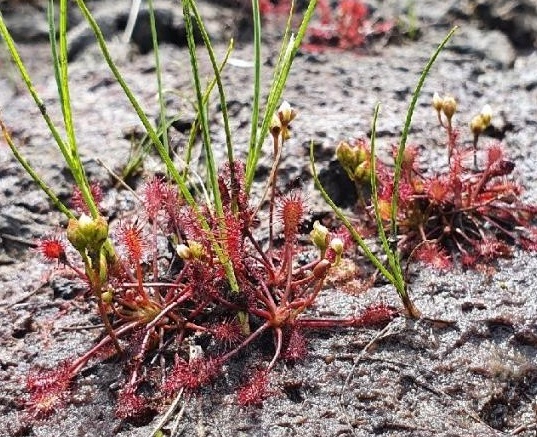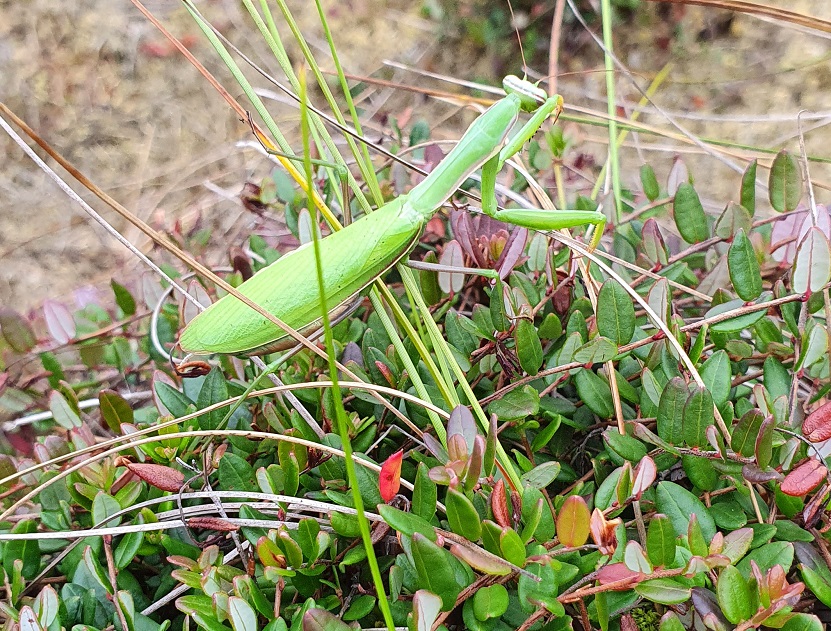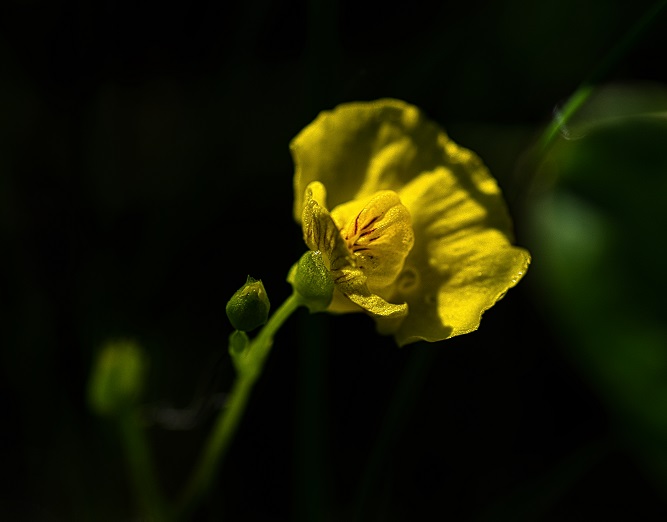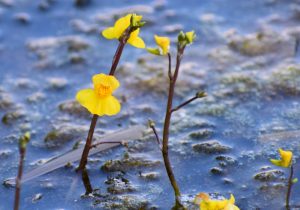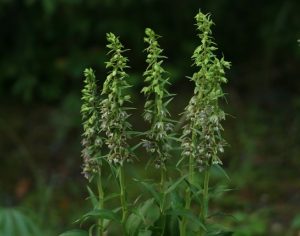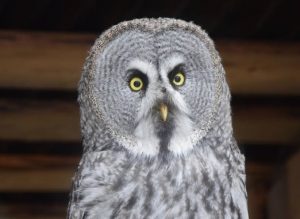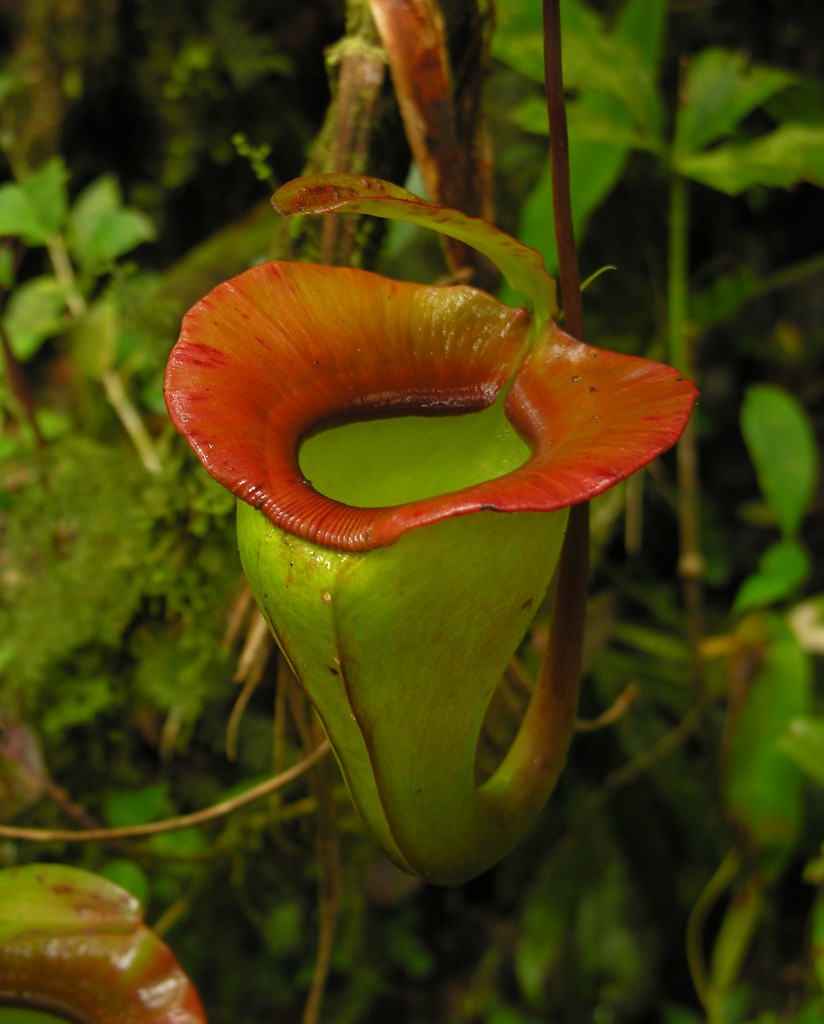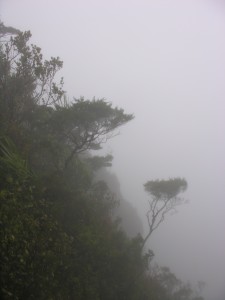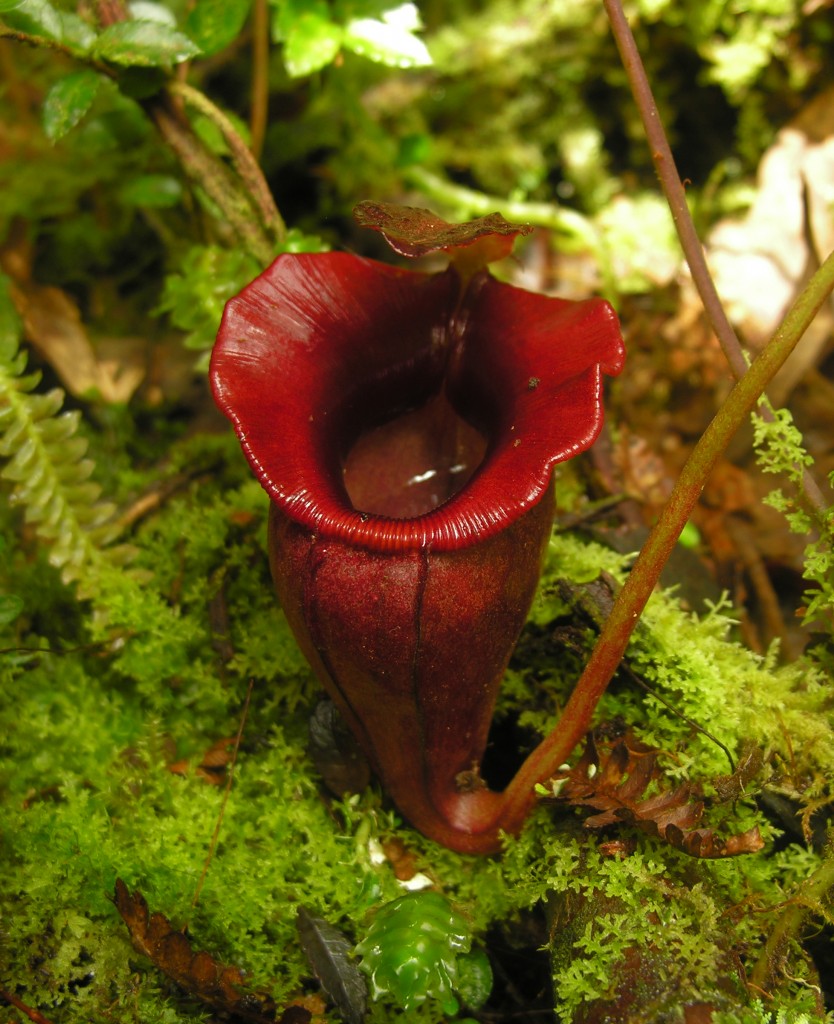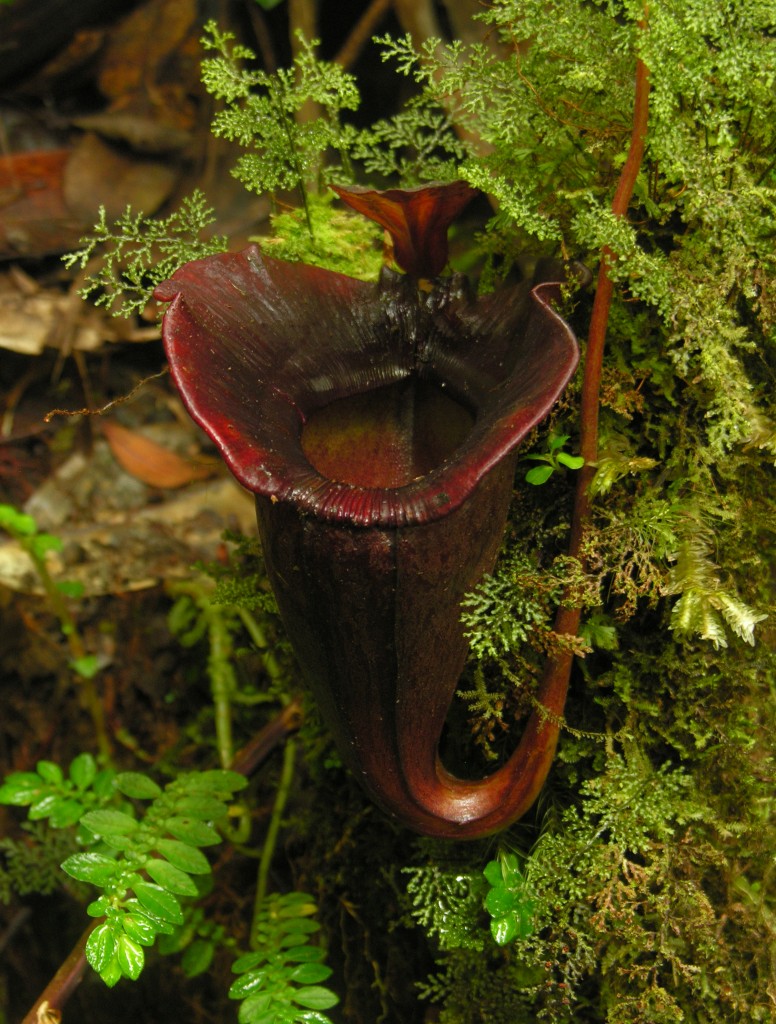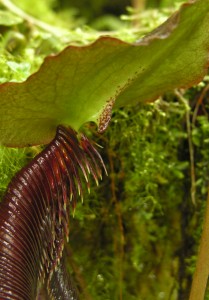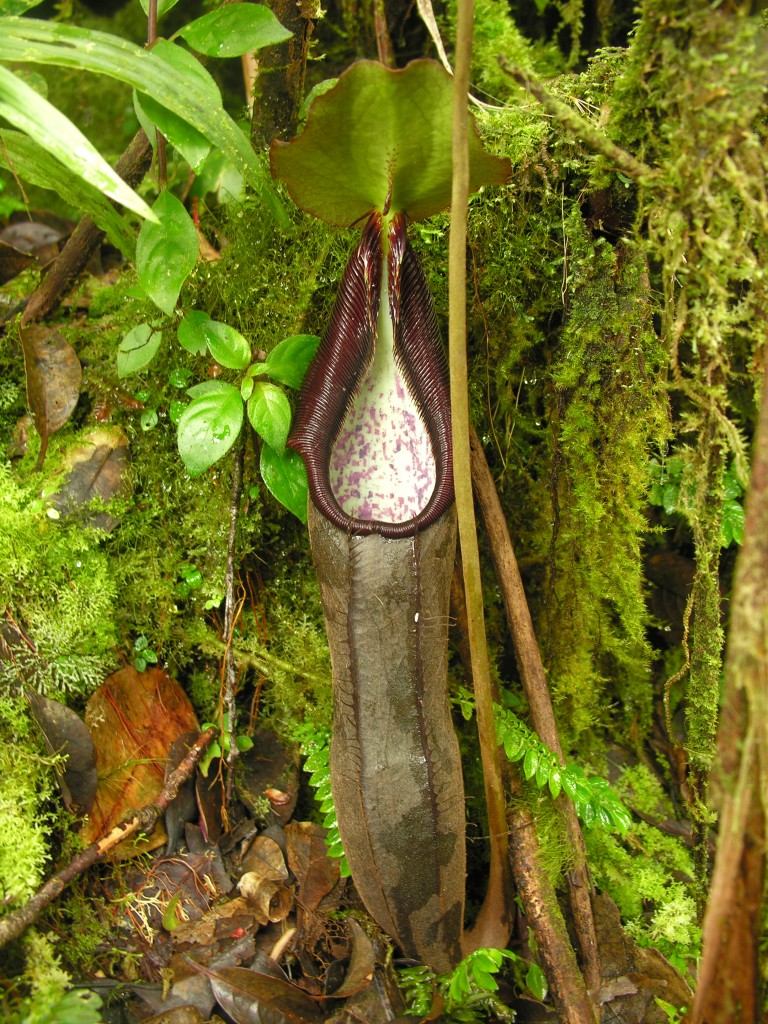In 1658, the first pitcher plant of the genus Nepenthes was described on the island of Madagascar by the French naturalist and explorer Etienne de Flacourt. Over the 350 years since that discovery, a further 120 species of pitcher plants have been discovered across South East Asia, and today, it is clear that the Nepenthes are largest and most diverse genus of all carnivorous pitcher plants of the world. Recently two spectacular new species of Nepenthes were discovered in Sumatra, Indonesia and in March, 2007 I traveled to this spectacular island in the company of two friends Alfindra Primaldhi and Apriza Suska in an attempt to find and study these two newly discovered plants in their natural habitats.
Two renowned Australian botanists and field research Dr. Charles Clarke and Troy Davis climbed a remote peak in Sumatra and found there, two pitcher plants which were distinct in all respects from all species known at that time. Dr. Charles Clarke named one of the new species Nepenthes jacquilinea after his wife Jackie Clarke while Troy David named the second new species Nepenthes izumieae after his wife Izumi Davis. Both new species were formally described and published in 2001 and still today they remain among the most spectacular of all pitcher plants.
I traveled to a remote peak in central Sumatra in order to study these two plants. The climb to their habitat took approximately six hours and followed a little known trail made by hunters and rattan collectors that led away from villages and rice paddies in the lowlands into the surrounding, little visited mountains several hundred meters above. From an altitude of approximately 1,700 meters above sea level I started seeing Nepenthes jacquilineae plants. The habitat consisted of stunted montane trees amongst which the pitcher plants grew in the company of many spectacular orchids. For several hours during our climb, the weather had been rainy and very misty however as we reached the upper slopes of the mountain, the weather improved and I was able to spend the day amongst the dew drenched mossy montane forest studying the two pitcher plants I had come to find.
From 1,750 meters above sea level Nepenthes jacquilineae plants were common and the plants grew as vigorous climbing vine scrambling between mossy trees of its habitat. Nepenthes jacquilineae produces leaves that are up to 35 cm in length, from which distinctive pitchers emanate on long tendrils. The pitchers of Nepenthes jacquilineae are unusual in that unlike most species of Nepenthes, the peristome (the rim of pitcher opening) is broad and flared and in extreme specimens, up to 35 mm in width. The body of the pitcher is funnel shaped and usually lined with two, diminutive wings which run down the front of the trap. In total size the pitchers of Nepenthes jacquilineae can reach impressive sizes – up to 20 cm in length or so, but usually are considerably smaller.
One of the most remarkable aspects of the pitchers of this species is their variability in terms of colour. While the majority of plants which I observed produced pitchers that were predominantly yellowish green except for the peristome which was bright orange, a few specimens had produced traps that were consistently pure red in colour and a very small number produced pitchers that were dark purple or almost black. In all cases each individual plant always produced pitchers of more or less the same colour, so it would appear that there are multiple colour forms of this species although the variability of Nepenthes jacquilineae has never been fully studied.
Nepenthes produce their distinctive pitchers in order to attract, trap and digest arthropods in order to augment nutrients and minerals and survive in barren habitats that are deficient in minerals and nutrients. Arthropod prey is mainly attracted to the plants traps by secretions of nectar and the bright colouration of the pitchers, and eventually falls within the pitchers to drown and be digested in the liquid contained within. The broad, expansive peristome of Nepenthes jacquilineae may serve two functions. It might firstly increase the amount of arthropods that is attracted since certainly it makes the pitchers much more conspicuous amongst their surroundings and especially inviting to flying insects which constitute a major part of the plants’ prey. Possibly also the peristome serves to dissipate the scent of nectar if indeed nectar is secreted from the surface of the peristome as in some species of pitcher plants. Often the peristome of Nepenthes jacquilineae is upturned which would presumably cause a lot of rainwater to be funneled into the plants’ traps and as a result, perhaps it does therefore have the additional purpose of ensuring sufficient rainwater fills the plants pitcher to ensure insect prey can be caught efficiently.
After studying many spectacular Nepenthes jacquilineae plants I continued to climb up the mountain towards the summit where Nepenthes izumieae was reported to grow. From 1,800 meters above sea level or so, this spectacular species could also be observed growing in abundance. Nepenthes izumieae produces spectacular elongated pitchers that are up to 30 cm in length and the plant grows as a vigorous climber or occasional epiphyte. It produces long scrambling vines which grow draped between the mossy montane trees amongst which it grows. The pitchers are more or less cylindrical and generally less than 5 cm in width and can easily be distinguished from the traps of Nepenthes jacquilineae in that they are predominantly pure blackish brown in colour, except for the interior of the trap which is light yellowish green. The peristome also differs profoundly from that of Nepenthes jacquilineae in that it is comparatively narrow and lined with prominent ribs up to 3 mm in width. The upper part of the peristome forms a series of two parallel rows of downwards pointing spines which protrude downwards above the pitcher opening.
The relationship of Nepenthes jacquilineae and Nepenthes izumieae has not been thoroughly researched however it seems unlikely that these two species are closely related. It seems more likely that Nepenthes jacquilineae is more closely associated to a morphologically similar species, Nepenthes tenuis while Nepenthes izumieae is probably more closely associated with Nepenthes lingulata and Nepenthes singalana – both of which are also from Sumatra. Evidently however, Nepenthes jacquilineae and Nepenthes izumieae cross breed quite frequently as I observed several hybrids growing naturally. Perhaps this is not surprising since the two plants grow together in areas where the altitudinal ranges of their habitats overlap. The hybrid plants represent the midway form between the two species and were reminiscent of Nepenthes izumieae in shape however lacked the distinctive peristome of Nepenthes jacquilineae.
Unfortunately much of the habitat of Nepenthes jacquilineae and Nepenthes izumieae lies outside of the Sumatra’s network of National Parks and consequently is not protected from poaching or habitat destruction. Over-collection is a particular threat to Nepenthes since cultivated specimens of many species fetch high price amongst horticulturalists. Fortunately both Nepenthes jacquilineae and Nepenthes izumieae have been entered into cultivation successfully and are produced through tissue culture and have been distributed across the world through various commercial nurseries. The wide availability of these two spectacular plants and low costs will reduce the incentive for their collection from the wild and therefore undermine the need for poaching so that these spectacular plants can have a future in their natural habitat in Sumatra. That two spectacular previously undiscovered pitcher plants could be found on a single mountain in Sumatra in 2001 brings hope that Sumatra’s many other remote peaks could hold many further new species of plants and animals. Indeed since the discovery of Nepenthes jacquilinea and Nepenthes izumieae, several further species of pitcher plants have been found across the highlands of Sumatra and no doubt many more remain to be discovered.
Stewart McPherson
